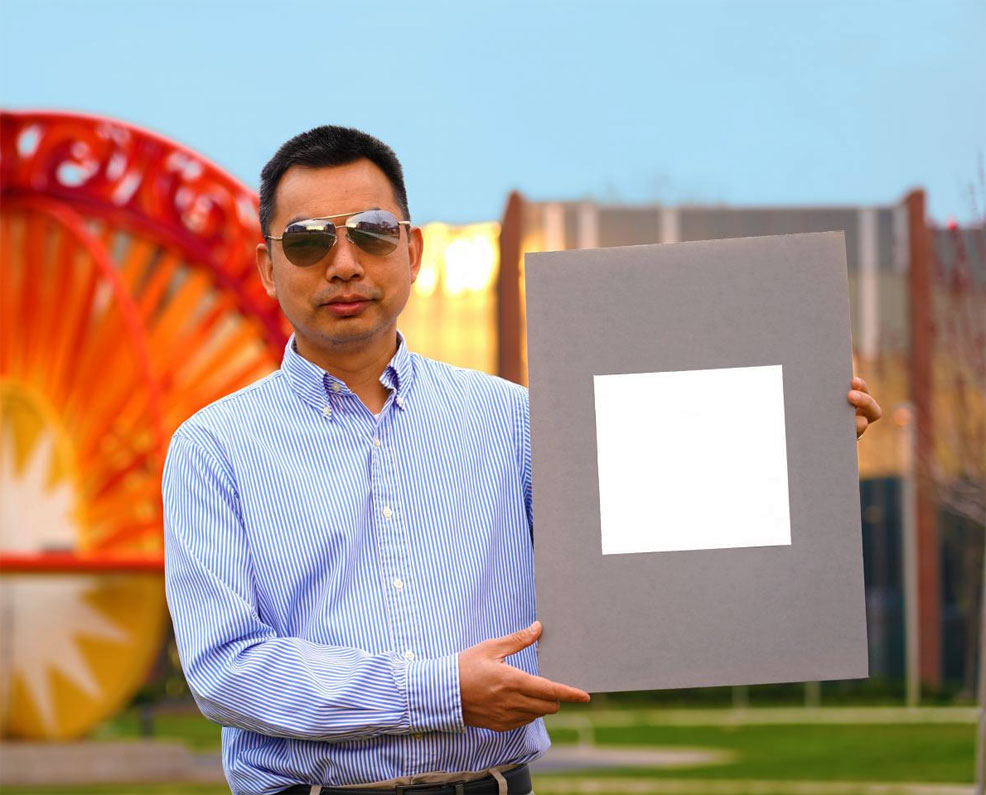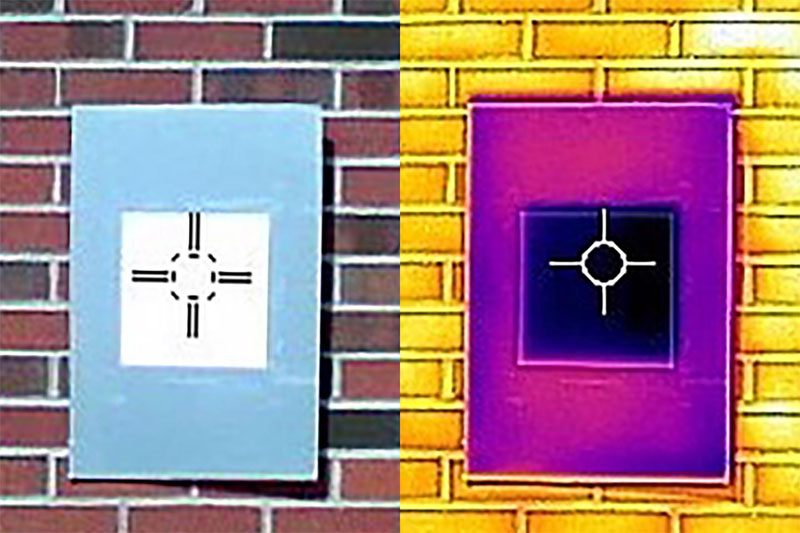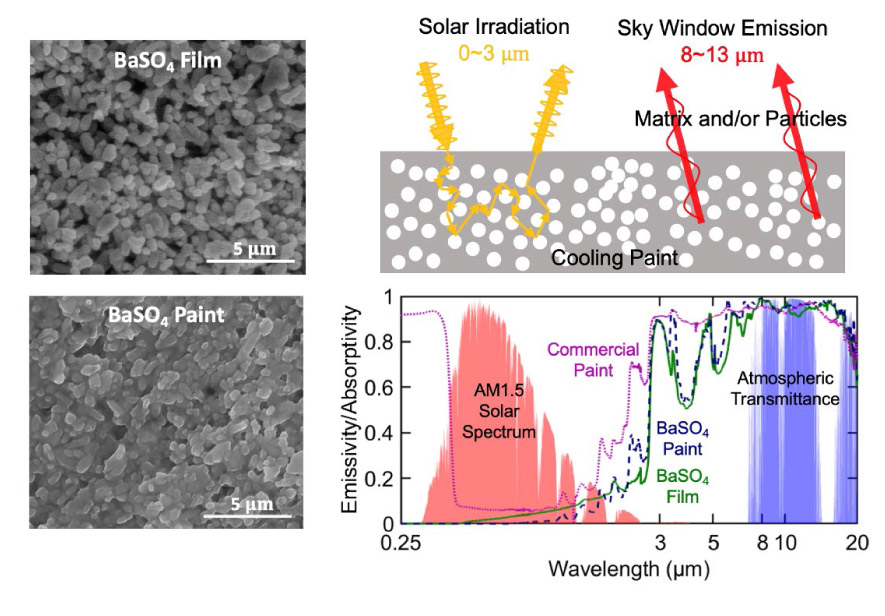
19th April 2021 Ultra-white paint cools surfaces by 10°C Researchers at Purdue University have demonstrated the whitest ever paint formulation, which reflects up to 98.1% of sunlight and could reduce the need for energy-hungry air conditioners.
Buildings of the future may have their roofs and other surfaces coated with an ultra-white paint, helping to reduce the impacts of both global warming and the urban heat island effect – thanks to a new passive cooling technology created at Purdue University, Indiana. The breakthrough appears this month in the journal ACS Applied Materials & Interfaces. "If you were to use this paint to cover a roof area of about 1,000 square feet, we estimate that you could get a cooling power of 10 kilowatts. That's more powerful than the central air conditioners used by most houses," said Xiulin Ruan, Professor of Mechanical Engineering at Purdue. The researchers believe that this shade of white may be the polar opposite equivalent of the blackest black – known as "Vantablack" – which absorbs up to 99.9% of visible light. An earlier version developed by the Purdue team in October last year reflected 95.5% of sunlight. However, this latest version is even more efficient with up to 98.1% reflected and keeps surfaces even cooler. Typical commercial white paint gets warmer, rather than cooler. Paints on the market that are designed to reject heat reflect only 80%-90% of sunlight and can't make surfaces cooler than their surroundings.
Two features give the Purdue team's paint its extreme whiteness. One is the very high concentration of a chemical compound called barium sulfate which is also used to make photo paper and cosmetics white. "We looked at various commercial products – basically anything that's white," said Xiangyu Li, a postdoctoral researcher at the Massachusetts Institute of Technology who collaborated on this project. "We found that using barium sulfate, you can theoretically make things really, really reflective, which means that they're really, really white." The second feature is that the barium sulfate particles are all different sizes. How much each particle scatters light depends on its size – so a wider range of particle sizes allows the paint to scatter more of the light spectrum from the Sun. "A high concentration of particles that are also different sizes gives the paint the broadest spectral scattering, which contributes to the highest reflectance," explained Joseph Peoples, a PhD student in mechanical engineering at Purdue.
The paint's whiteness also makes it the coolest on record. Using high-accuracy temperature reading equipment called thermocouples, the team demonstrated outdoors that the paint can keep surfaces 10.6°C (19°F) cooler than their ambient surroundings at night. It can also cool surfaces 4.5°C (8.1°F) below their surroundings under strong sunlight during noon hours. It even works in the middle of winter. During an outdoor test with an ambient temperature of 6°C (43°F), the paint still managed to lower the sample temperature by as much as 10°C (18°F). Scientists have been attempting to develop radiative cooling paint as an alternative to traditional air conditioners since the 1970s. The Purdue team's latest breakthrough took six years of research, building on the progress from earlier decades. Having considered over 100 different materials, they narrowed it down to just 10 before testing about 50 different formulations for each material. They finally identified the one for barium sulfate. The technique used to create the new paint is compatible with commercial paint fabrication processes. The use of air conditioners and electric fans to stay cool already accounts for about one-fifth of total electricity used in buildings around the world – or 10% of all electricity consumption today. This energy demand is forecast to triple by 2050, according to the International Energy Agency, as incomes and living standards improve in developing countries, while global average temperatures also increase. In particularly hot regions, such as India, air conditioning ownership could nearly quintuple. Passive cooling solutions, such as the white paint developed at Purdue, may help to lessen that demand, creating lower ambient temperatures and a new generation of more sustainable buildings in the future.
Comments »
If you enjoyed this article, please consider sharing it:
|









